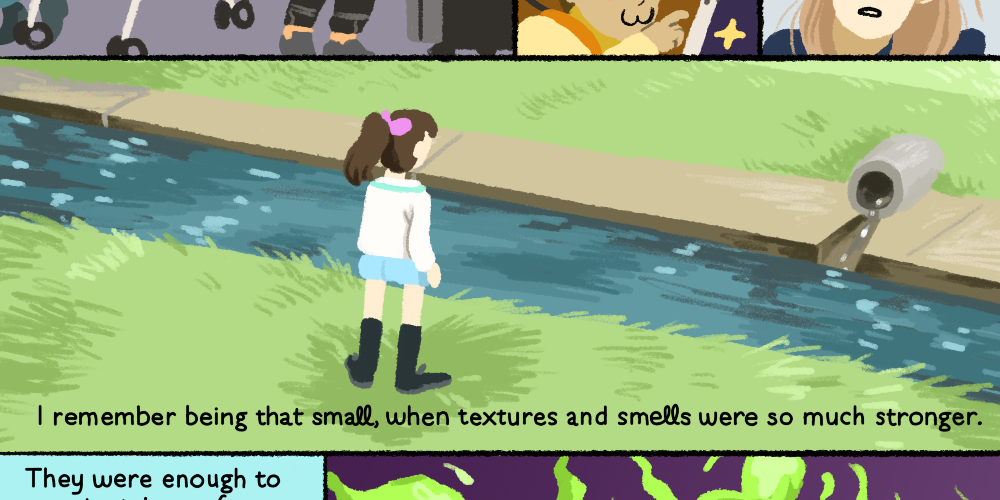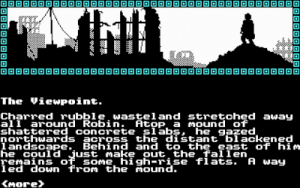I love it when critics find ways to get a point across without words. Images can be just as valuable a critical tool as writing; they offer a different set of techniques for demonstrating what a game is doing or what it means to you. Normally, visual essays and photojournalism are thin on the ground in these roundups, but this week I’ve been spoiled rotten with pieces that use visual expression to say something about games and aesthetics.
Cracking open
Let’s start with the broader topic of how to engage critically with games. A few different approaches were raised this week, from diagrams to serenades.
- Daniel Primed:: Hobbyist Game Analysis » Cracking the Resident Evil Puzzle Box – Chapter Overview
A book on level design came out earlier this month, and Daniel Johnson described the cartography-led methodology behind his own contribution. - How to Break Up With a Videogame | ZAM – The Largest Collection of Online Gaming Information
Eron Rauch makes an impassioned argument for the videogame love song. - Laura K Plays 7: Yo-Kai Watch/Presence – ZEAL – Medium
Laura Knetzger expresses the aesthetic, haptic experience of a much-loved game through illustration and comic strip.

Ungentle snow
Homing in more directly on how a game looks, these two pieces examine how the landscapes of particular games are composed, and what effect that has on the play experience.
- Simple Fear and Flying | vextro
leeroy lewin takes on Tofu Racer, a game I might not have heard about otherwise, and highlights important game design considerations alongside a charming ode to its aesthetic goals. - The Division – Aesthetic Review – The Thesaurus Rex
Taylor Hidalgo portrays New York City as a character responding to a combat sequence in the snow. - 304: The visual power of pure form
Ben Chandler draws attention to the effective use of intricate silhouettes in 2D adventure game design
Conversation options
There were some interesting discussions this week about conversations as learned behavior and as labor, with diverse perspectives on how ability and circumstances change the kind of toll that conversation takes on a person.
- Beehives Don’t Have Legs: On Road Trips and Rhetoric – Not Your Mama’s Gamer
Lee Hibbard talks about how car games can teach argumentation and rhetoric. - How Twitch is turning ‘always be streaming’ into a career with zero balance – Polygon
Ben Bowman highlights the exploitative nature of how Twitch is structured, particularly as new products are released that encourage an ever-higher workload from streamers. - Autism & Empowerment: What Gaming Means to Me – FemHype
Patricia C. Baxter identifies particular game mechanics and conceits that work well for her as an autistic person, and calls for greater participation and inclusion of autistic people in discussions about game design.
“Granted, video games still have a long way to go in terms of being fully accessible, and some difficulty curves are still rather high, but knowing that it’s perfectly natural to talk to non-player characters (NPCs) to reorient yourself, choosing your own play style, or leveling up your party before taking on a difficult boss is refreshing to someone living in a world where people raise eyebrows when you ask for clarification or require extra accommodations. My brain is not punished or judged for being autistic when I game; I simply play and enjoy.”
Tragedy
Finally, these three pieces examine narrative techniques that provoke players not to take their own victories for granted.
- On the Level: ‘L.A. Noire’ and the Set of ‘Intolerance’ – Waypoint
Ed Smith traces the narrative themes that connect L.A. Noire to Intolerance, in a great example of how to critique a single mission through a larger perspective. - When violent games want you to play nice – Polygon
Claire Hosking examines narrative and design techniques that encourage players to minimize casualties in the Dishonored games. - Playing to Lose: The Tragedy of ‘This Is the Police’ | PopMatters
G. Christopher Williams identifies how a classic literary genre can transform contemporary gaming tropes.
“Tragedy, as a genre, dismantles. It doesn’t tease us with the idea of inevitable victory as most modern video games do. It grimly acknowledges the inevitability of loss in endings, something that gamers are trained to pretend just isn’t possible, just isn’t allowed”
Subscribe
Critical Distance is community-supported. Our readers support us from as little as one dollar a month. Would you consider joining them?
Contribute
Have you read, seen, heard or otherwise experienced something new that made you think about games differently? Send it in!





